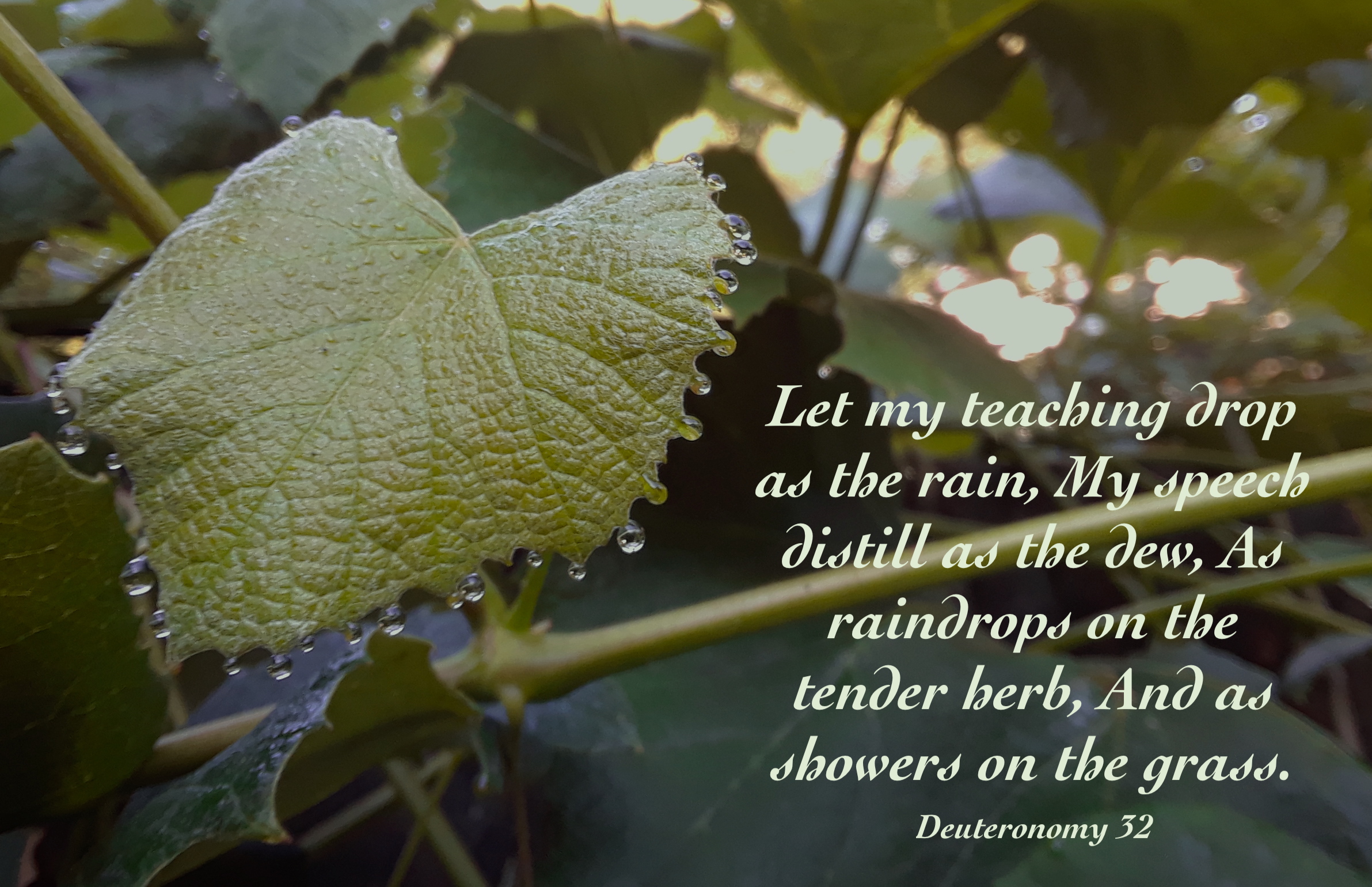The Original Hypertext: “In The Beginning Was The Word”
Written by Jean Jantzen
The Bible is known as the ‘Greatest Book’ ever written. Yet scholars, theologians and philosophers have never come to any sort of agreement on one circumscribed way to read or understand this intriguing book. In fact, trying to find some middle ground has led to hot debate, division and confusion; nonetheless, the Bible continues to be a bestseller. In his book Hypertext, George Landow describes the many features of hypertext: it has many “networks” that “interact . . .it has no beginning, it is reversible; we gain access to it by several entrances, none of which can be authoritatively declared to be the main one”(3). In other words, hypertext is a “vast assemblage” which suggests “the structure of an interlacing, a weaving, or a web which would allow the different threads and different lines of sense or force to separate again, as well as being ready to bind others together”(9). In a development of these principles, Professor Ben Shneiderman has three golden rules for hypertext: 1) there is a large body of information organized into numerous fragments; 2 ) the fragments relate to each other; 3) the reader needs only a small fraction at a time. (http://www.aber.ac.uk/~jjw90/work/misc/hyprguid.htm# Getting Started: Shneiderman’s Golden Rules of Hypertext).
I will demonstrate how the Bible is a living, dynamic force and fulfills all the aforementioned characteristics of hypertext.
The Bible contains 66 books written by different authors at different times and, similar to electronic hypertext, the Bible may be read starting at any given point, or may be read only in small portions. One may read a complete story about Joseph in Genesis or the story of Ruth and be quite content. Or, the story of Joseph can be read as a story within another story. A few verses or chapters of the Book of Psalms or Proverbs may be read without starting at the beginning of either book. One can read a complete book such as the Book of Daniel or the Book of Revelation and still be reading only a fragment of the whole. What makes reading the Bible so unique is that it may also be read in a linear fashion from cover to cover, or in any order. Because the threads are multifaceted each joins intricately by a web to another book, chapter or verse making it a “vast assemblage.”
How does the Bible compare with Landow’s statement that “all hypertext systems permit the individual reader to choose his or her own center of investigation and experience?”(12). Take for instance the story of Creation found in the first chapters of the Bible—if one wants to know more about creation, it is not necessary to just read the first chapters of Genesis. One may look up the cross-references and see how the theme of creation leads to many other links. The cross-reference is a list of verses usually found in a narrow centre column parallel to the main discourse. For instance, the cross reference for Genesis1:1 is Psalm 136:5, John 1:1-3, Colossians 1:16,17, Hebrews 1:8-10 & Hebrews 11:3. Each of these links in turn would lead to another path of investigation. For example, John1:1-3 discusses not only this beginning creative process, but it also tells about God, so the next link would expand one’s knowledge about this God who created the earth and so on and so on.

The Bible is both read as a story and as hypertext, starting at any point
Another possibility would be to explore a specific subject, for example, the Sabbath. Use the concordance, which lists every word in the Bible, find the word ‘Sabbath’ and then look up every verse from Genesis to Revelation pertaining to that subject, then cross-reference.
The Bible also corresponds to hypertext because it lends itself to “a mesh of associative trails.” (Landow,15) Many Bibles contain additional material such as a Text Cyclopedia, Bible Harmonies and Illustrated studies, concordance, pictorial maps, an atlas, charts, chain references, and/or studies of prominent characters. If not, there are volumes of reference materials by myriad authors available: Commentaries, hand books, maps, dictionaries, encyclopedias, concordances, and Greek or Hebrew lexicons all of which lead to other trails.
Roland Barthes calls the “‘classic text’ readerly because it does not allow the reader to participate in the creative process enjoyed by the writer”(Landow, 5). Similar to hypertext, some Bibles come with a wide margin which invites creative participation. The wide margin may be used for taking notes, recording one’s thoughts to individual passages, or jotting down research data. If one chooses electronic hypertext, the Internet has a Bible (or purchase Bible Software Package) where one may work in up to eight windows at a time. “Each window can be resized or stacked; with different settings.” It has fast and easy editing—just cut, copy, and paste text; add Bible passages to sermons and so forth. In this system one can easily change wording, check spelling or get to a verse quickly. One may “point to the abbreviation of the book, the chapter number, and the verse number and then move to anywhere in the Bible with the mouse. Underline, color-code, italicize, and/or bold any text to emphasize, contrast, and visually associate words and phrases. (http://www.accsyst.com/jhaslett/exegetical.htm)
A few questions that I think need addressing are. “Why is the Bible hypertext? Was it purposely constructed that way, or are there well-thought-out reasons why the material of the Bible has turned out to be similar to hypertext? Does the Bible answer this question for us? Isaiah asks a similar question: “Whom shall he teach knowledge? and whom shall he make to understand doctrine? (Isaiah 28:9). Isaiah tells us that:
the word of the Lord was unto them precept upon precept, precept upon precept’ line upon line, line upon line; here a little, and there a little that they might go, and fall backward, and be broken, and snared, and taken . . .and yet they would not hear (Isaiah 28:10-13).
Isaiah makes it clear that the Bible is written as hypertext for a specific purpose. For those who refuse to listen they will not understand the words of life written in this book. To understand any general subject in the Bible, therefore, it is necessary to view all the scriptural evidence touching that particular subject. Each passage is interpreted by, and in light of other texts. Evidently, this is not as simple as it appears to be. So the question remains: “Do you think that a myriad of authors over the millennia could possibly construct a hypertext that fits together perfectly like pieces of a puzzle or do you think it happened just by chance?
There is no doubt that the Bible is no ordinary “readerly” text, but is technologically unrivaled and brilliantly constructed. The Bible compares with one of the most advanced hypertext systems thus far developed which is described as being “a system[which] allows authors or groups of authors to link information together, create paths through a corpus of prepared material, annotate existing texts, and create notes that point readers to either bibliographic data or the body of the referenced text . . . Readers can browse through linked, cross-referenced , annotated texts in an orderly but non-sequential manner”(Landow,5). As in ages past, The Bible will continue to challenge its readers with its many intricate paths to knowledge, it myriad complexities and its exegetical traditions.
REFERENCES
Landow, George P. Hypertext: The Convergence Of Contemporary Critical Theory and Technology. John Hopkins University Press. 1992.(http://calliope.jhu.edu/press/books/landow/contents.html)
The Bible. King James Version New York: Thomas Nelson Publishers.1972.








